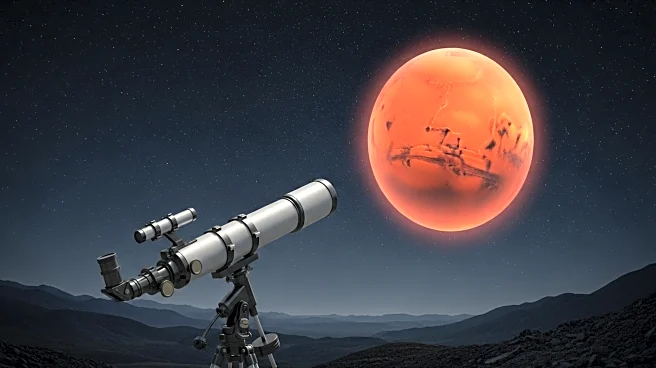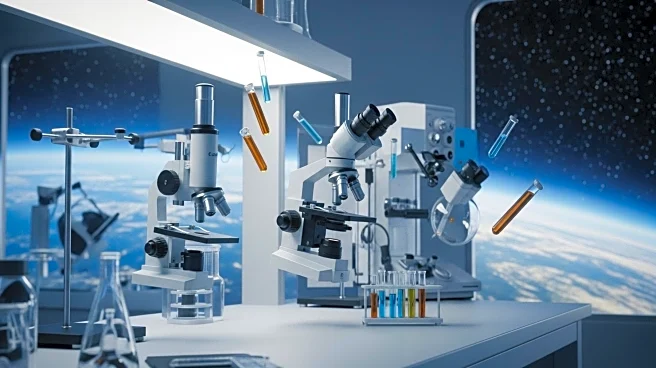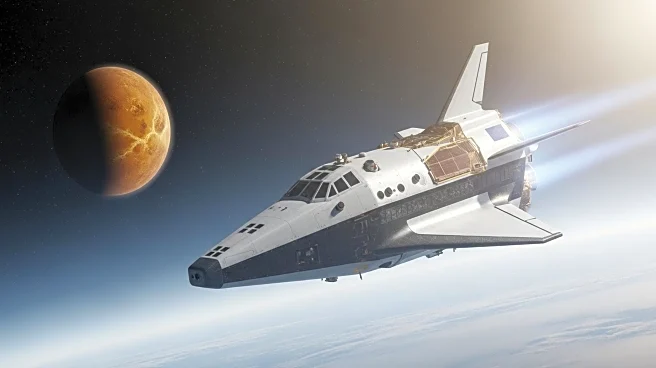What is the story about?
What's Happening?
Astronomers are exploring a new telescope design that could significantly improve the detection of Earth-like exoplanets. The proposed design features a rectangular mirror, measuring 1 by 20 meters, which could operate at 10 microns infrared wavelengths. This design aims to resolve Earth-like exoplanets around sun-like stars within 30 light-years using current technology. The concept is based on the Diffractive Interfero Coronagraph Exoplanet Resolver (DICER) and is seen as a practical alternative to larger or more complex telescope concepts. The rectangular telescope could potentially detect about half of such planets in under three years, offering a feasible path to identifying Earth 2.0.
Why It's Important?
The development of a rectangular telescope could revolutionize the search for extraterrestrial life by making it easier to detect Earth-like planets. This advancement holds significant implications for astronomy and space exploration, as it could lead to the discovery of planets with conditions suitable for life. The ability to identify such planets could enhance our understanding of the universe and the potential for life beyond Earth. The proposed design also presents a cost-effective and technologically feasible solution compared to other complex telescope concepts, potentially accelerating the pace of exoplanet discovery.
What's Next?
Further engineering and optimization of the rectangular telescope design are necessary to ensure its capabilities. If successful, this design could lead to the identification of promising exoplanets with atmospheres that suggest the presence of life. Future missions could involve dispatching probes to these planets to gather more detailed data. The development of this telescope could also influence future space exploration strategies and priorities, as it offers a new approach to studying distant worlds.
Beyond the Headlines
The proposal of a rectangular telescope highlights the ongoing innovation in telescope design and the quest to overcome the challenges of space observation. This development underscores the importance of interdisciplinary collaboration in advancing space technology and the potential for new discoveries that could reshape our understanding of life in the universe.
AI Generated Content
Do you find this article useful?















